When truck driver Chris Gromek wants to know what’s really going on in Washington, he scans the internet and satellite radio. He no longer flips TV channels because networks such as Fox News and MSNBC deliver conflicting accounts tainted by politics, he says.
“Where is the truth?” asks the 47-year-old North Carolina resident.
Answering that question accurately is a cornerstone of any functioning democracy, according to none other than Thomas Jefferson. But a year into Donald Trump’s fact-bending, media-bashing presidency, Americans are increasingly confused about who can be trusted to tell them reliably what their government and their commander in chief are doing.
Interviews across the polarized country as well as polling from Trump’s first year suggest people seek out various outlets of information, including Trump’s Twitter account, and trust none in particular.
Many say that practice is a new, Trump-era phenomenon in their lives as the president and the media he denigrates as “fake news” fight to be seen as the more credible source.
“It has made me take every story with a large grain, a block of salt,” said Lori Viars, a Christian conservative activist in Lebanon, Ohio, who gets her news from Fox and CNN. “Not just from liberal sources. I’ve seen conservative ‘fake news.'”
Democrat Kathy Tibbits of Tahlequah, Oklahoma, reads lots of news sources as she tries to assess the accuracy of what Trump is reported to have said.
“I kind of think the whole frontier has changed,” said the 60-year-old lawyer and artist. “My degree is in political science, and they never gave us a class on such fiasco politics.”
Though Trump’s habit of warping facts has had an impact, it’s not just him.
Widely shared falsehoods have snagged the attention of world leaders such as Pope Francis and former President Barack Obama. Last year, false conspiracy theories led a North Carolina man to bring a gun into a pizza parlor in the nation’s capital, convinced that the restaurant was concealing a child prostitution ring. Just last week, after the publication of an unflattering book about Trump’s presidency, a tweet claiming that he is addicted to a TV show about gorillas went viral and prompted its apparent author to clarify that it was a joke.
Trump has done his part to blur the lines between real and not.
During the campaign, he made a practice of singling out for ridicule reporters covering his raucous rallies. As president, he regularly complains about his news coverage and has attacked news outlets and journalists as “failing” and “fake news.” He’s repeatedly called reporters “the enemy of the people” and recently renewed calls to make it easier to sue for defamation.
About 2 in 3 American adults say fabricated news stories cause a great deal of confusion about the basic facts of current affairs, according to a Pew Research Center report last month. The survey found that Republicans and Democrats are about equally likely to say that “fake news” leaves Americans deeply confused about current events. Despite the concern, more than 8 in 10 feel very or somewhat confident that they can recognize news that is fabricated, the survey found.
Victoria Steel, 50, of Cheyenne, Wyoming, said it’s important for people to invest time in finding reputable media sources or even friends to get the most information they can.
“You’re probably not going to get enough information out of sound bites, and you’re certainly not going to get it in a tweet,” said Steel, who says she voted for Democrat Hillary Clinton in 2016.
Two-thirds of Americans get at least some of their news from social media, Pew found.
“I think part of the problem is that now people are getting too much information and it confuses them and they don’t know how to decipher the true and the fake,” said Trent Lott, a former Senate Republican leader from Mississippi who’s worked in Washington for nearly half a century. He isn’t fond of Trump’s Twitter habit, but also says he sees bias in the coverage of Washington by the mainstream media.
There’s been no love for the media for decades. The percentage expressing a great deal of confidence in the press has eroded from a high of 28 percent in 1976 to just 8 percent in 2016, according the General Social Survey conducted by NORC at the University of Chicago.
“Trump didn’t invent this. He didn’t cause people to start feeling this way. He’s tapping into a vein that already existed,” said Gary Abernathy, publisher and editor of the Times-Gazette of Hillsboro, Ohio, one of the few daily papers that endorsed Trump. People, he added, “are nodding their heads right away because that’s how they’ve felt.”
Nicco Mele, director of the Shorenstein Center on Media, Politics and Public Policy at Harvard, views Trump as a symptom of long-term trends. “Now, can he accelerate them and make them worse? Almost certainly.”
When Trump labels something “fake news,” ”I just have started assuming … whatever he’s talking about must be true,” said 46-year-old Joseph Murray of Mustang, Oklahoma, a registered independent. “I feel like that attitude didn’t start until he took office.”
Trump tends to inflate the significance of what he’s done. He claims his tax cuts are the biggest in history, his accomplishments surpass those of all previous presidents, and his election victory was a “landslide.” None is true.
He still insists there were millions of illegal votes cast in the 2016 election, even though there’s no such evidence.
Even on matters existential, Trump makes things up.
Taunted on Twitter by North Korean leader Kim Jong Un, Trump responded Jan. 3 that his own nuclear button “is a much bigger and powerful one than his, and my Button works!” There is no such physical button.
Trump often bypasses the vast information-gathering apparatus that reports to him in favor of getting his reality from TV, or sometimes just his gut. That has led him to conclude wrongly that a rare riot in Sweden over a drug crime was instead linked to refugee extremism. He also falsely claimed that Obama tapped his phones at Trump Tower in the campaign.
“I’m a very instinctual person, but my instinct turns out to be right,” he told Time magazine. Besides, “I’m quoting highly respected people from highly respected television networks.”
(AP)

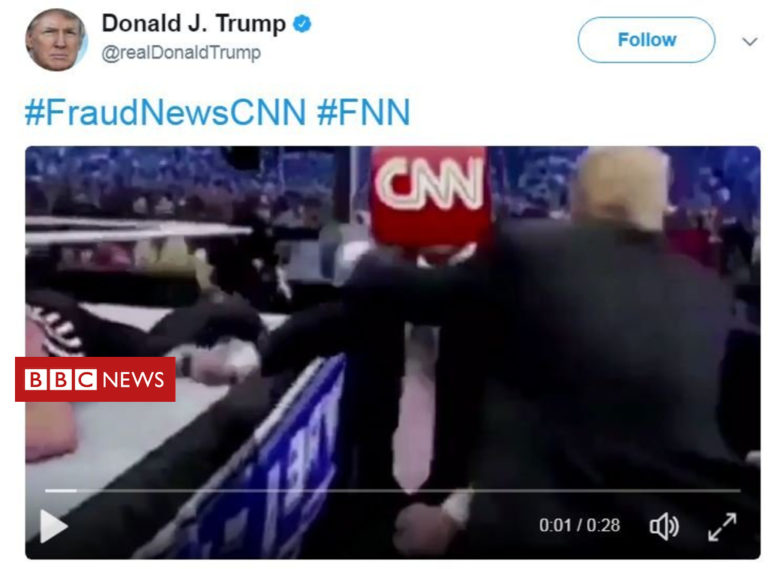

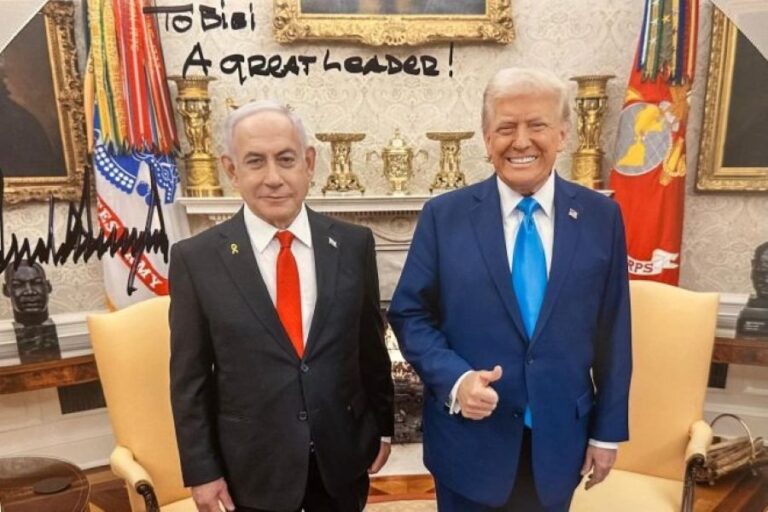

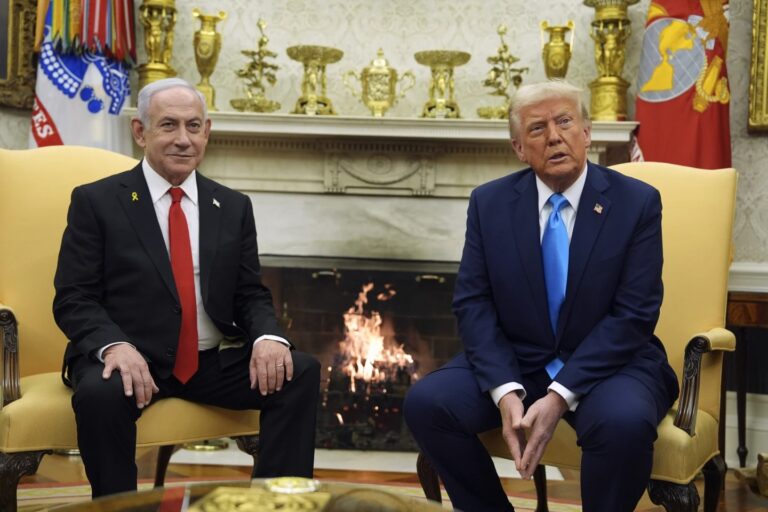
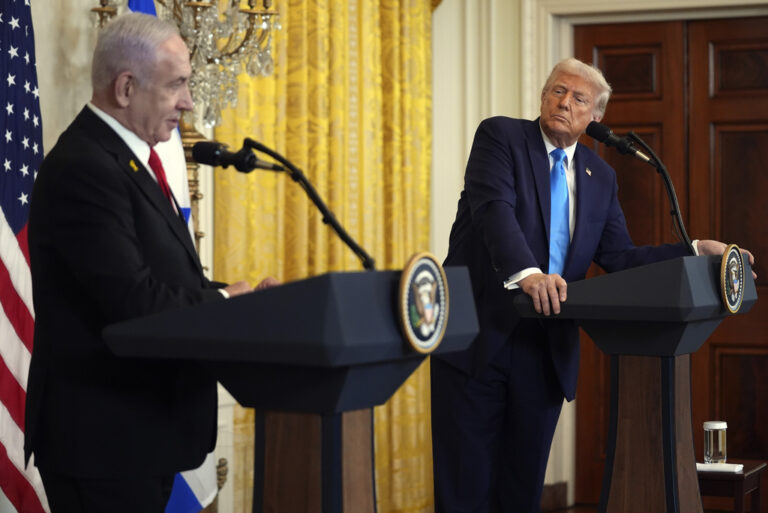
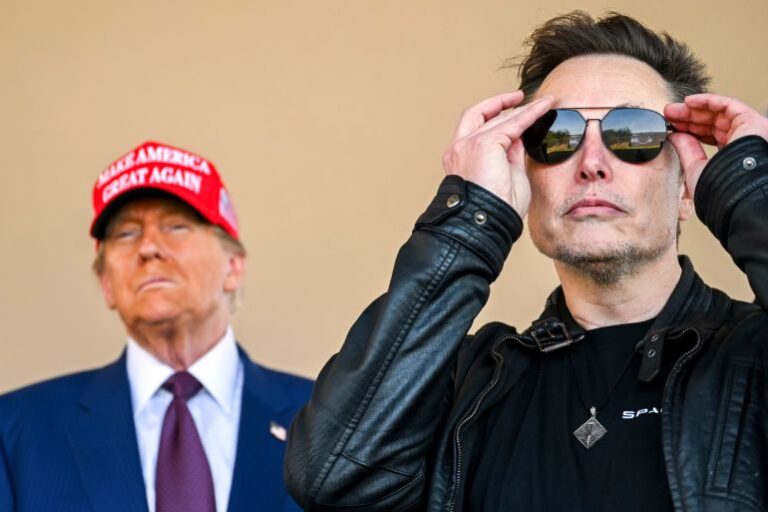

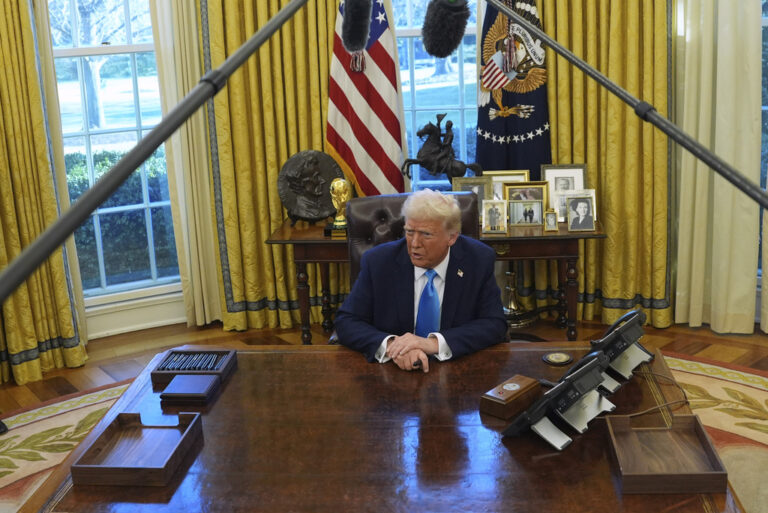
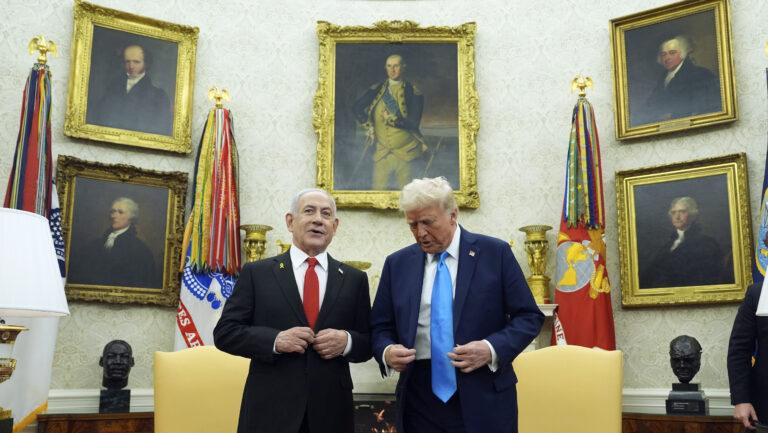

3 Responses
> Last year, false conspiracy theories led a North Carolina man to bring a gun into a pizza parlor in the nation’s capital, convinced that the restaurant was concealing a child prostitution ring.
“Last year”? The date was early December 2016. Now is mid-January 2018.
I should’ve saved my previous comment for this article. For some reason Silicon Valley (google, facebook, etc.) and the press think fake news is fake conspriacy theories. Like moon landing hoax’es etc. They can’t seem to grasp that fake news means fake quotes, fabricated stories, the Brian Ross situation. Even down to what happened to Dan Rather quite frankly.
” Donald Trump’s fact-bending, media-bashing presidency”???? ITS TIME FOR YWN TO STOP GETTING THEIR ARTICLES FROM FAKE NEWS AP!!!!